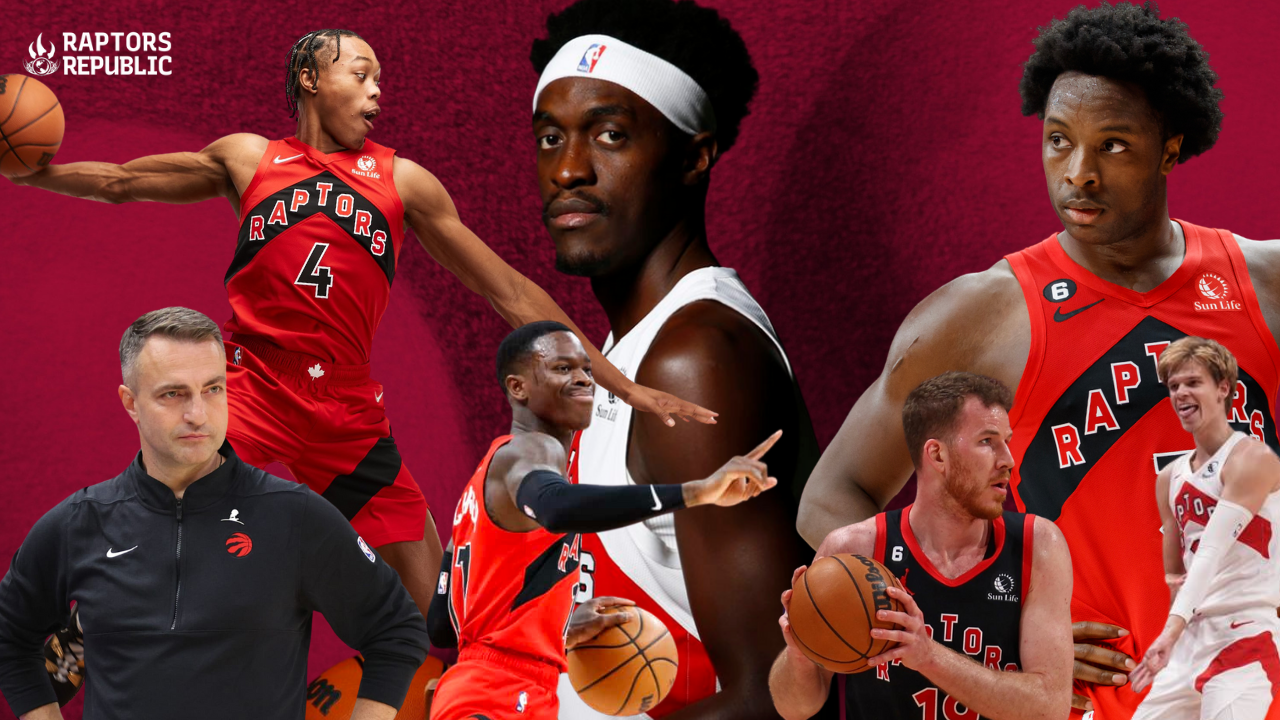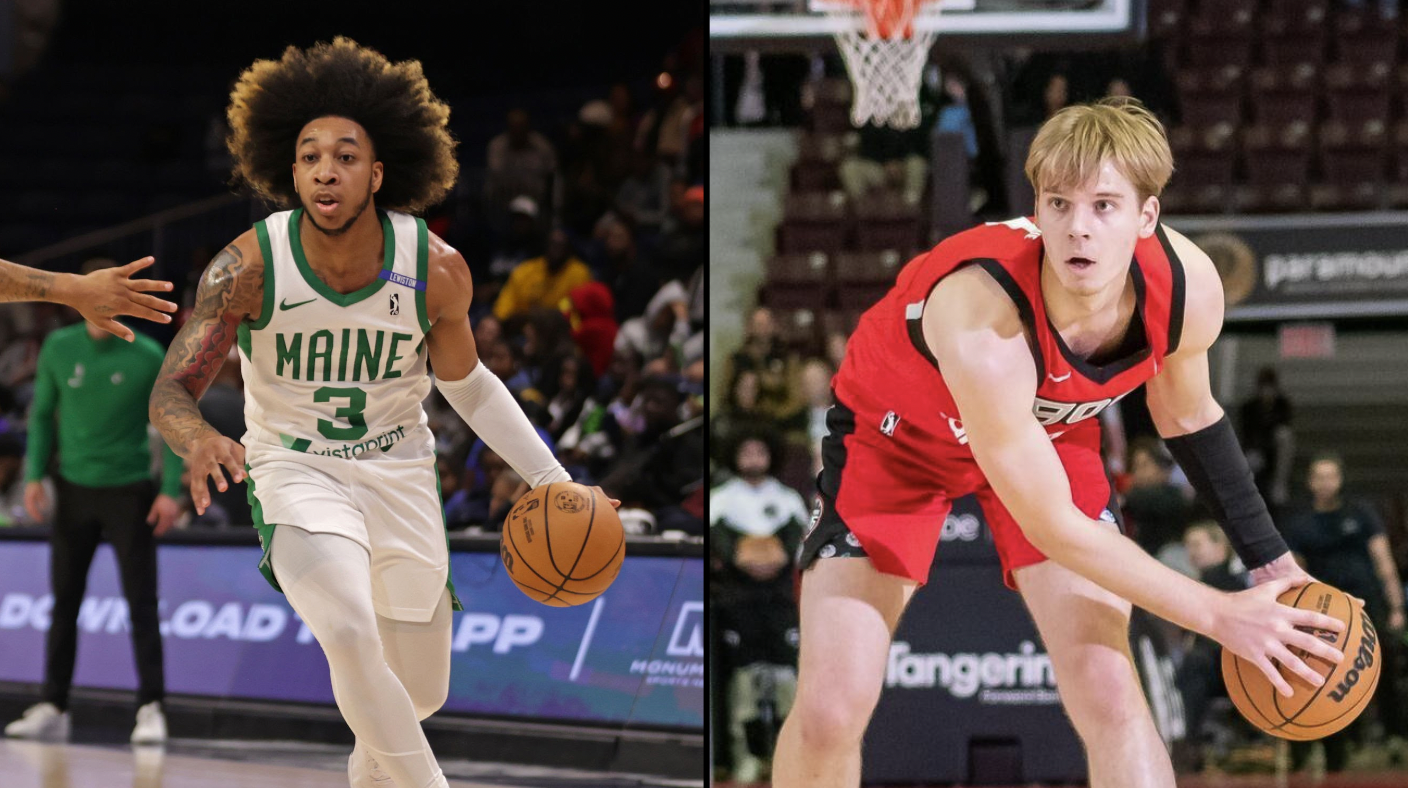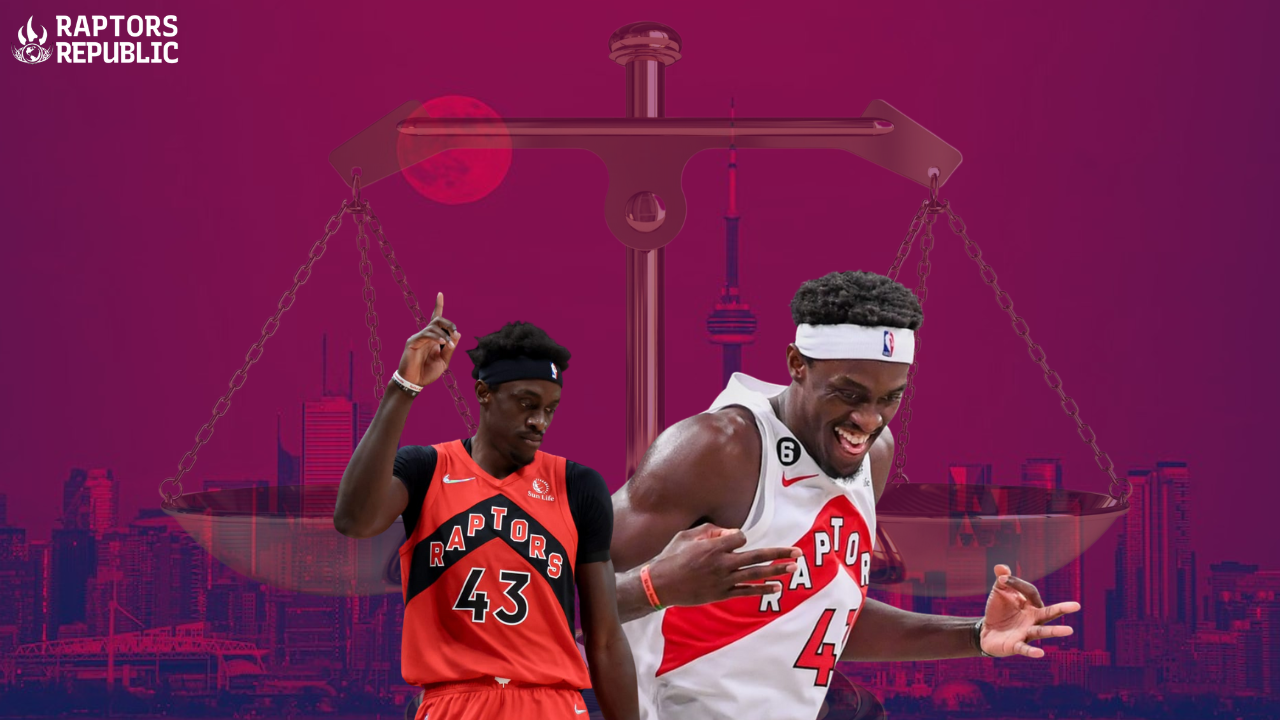If before the season started, you thought this year’s rendition of the Raptors would be a top-10 defense and a bottom-10 offense? You’d be right. Around .500? You’d be right. If you wanted to get even more specific and suggest they’d be a top-5 transition offense, a bottom-5 halfcourt offense, and a bottom-5 3-point shooting team? You’d once again be correct. These things weren’t terribly hard to predict. Personally, I thought all of these things would happen and said as much in my coverage leading up to the season.
However, the process by how the Raptors have been arriving at these numbers, these placements, has been different. As it turns out, limitations help place you just as much as strengths. The cool thing? The Raptors, with their new process — and a burgeoning young star in Scottie Barnes — look like they have the potential to overcome some of their limitations to the point of making all of the preseason predictions look pessimistic. And truthfully? Talking about limitations and placements is pretty boring. Basketball is a gorgeous expression of talent and aesthetic, so let’s look at how the Raptors are accomplishing things differently, a quarter of the way into the season.
The warts of Raptors teams of old — as far as process goes, not outcomes — were largely considered to be:
- the lack of passing, and the overall stagnation of the offense
- the Raptors propensity to allow other teams to rain hellfire from the corners
Wholesale changes have been made, and the Raptors have been able to completely swing things around regarding both of these things.
For one, the Raptors pass more, and with more intention. It might not seem like a big jump from 8th (292 per game) in the NBA in passes last season to 3rd this season (308 per game), but a lot of the Raptors passes were caught up above the break in Nick Nurse’s weave that he used to put ball handlers in motion. Under Rajakovic, the Raptors passes are more often putting teammates in scoring positions. A team with a bunch of good finishers, with big bodies, and limited dribble packages is using the pass to get to the rim efficiently – instead of drives. The Raptors are also cutting and screening way more. This has helped transform the NBA’s 23rd placed team in assists into at top-5 outfit in that category.
For the full explanation + some film on all this, read Louis’ terrific piece on the changing offense.
When it comes to defense, I had the honor of asking Rajakovic his first question about defense after arriving in Toronto. “For me everything starts defensively, with protecting the paint.” he told me. “If you protect the paint, after that we’re gonna take away corner threes, and we’re gonna have late contested wing threes.” adding at the end: “Don’t worry, we’re gonna have a really good defense.”
He also happened to say: “We can get in the x’s and o’s and I can draw you our schemes when we get a chance. I would love to do that.” Hopefully soon.
Well, Rajakovic isn’t a liar. Not only do I wholeheartedly agree with his more conservative approach to defense — as opposed to the helter-skelter stuff of years past — but the Raptors have allowed less attempts at the rim this season, and way less corner threes. They’re allowing roughly as many corner threes this season as they did during the championship season, which is the 11th least in the NBA. The years prior? 29th, 30th, 28th, 30th.
Some of this was always going to happen. The Raptors boast a very similar team to the one that finished last season, and that team was much better at limiting corner threes and protecting the paint after Poeltl’s arrival. There was some momentum guiding the Raptors this way, to be sure. However, the Raptors haven’t been nearly as dependent on Poeltl to guide defensive units this season as they were last season. Poeltl has been sublime over the past handful of games, but the Raptors have actually been able to lean into other strengths without him. Strengths derived from Scottie Barnes’ change in defensive role.
In the nearly 700 possessions Barnes has played without Poeltl on the floor this season? The team has graded out as a better than average defense. By virtue of the Raptors roster construction, they’re always going to have a healthy amount of big players out on the court. Barnes playing lower in the defense helps the Raptors lean into his more bombastic defensive playmaking. As far as stocks this season (steals + blocks), Barnes is 4th in the NBA. He sits behind Victor Wembanyama, Anthony Davis, Brook Lopez, and is a little bit ahead of Chet Holmgren. Existing among the unicorns and DPOY’s is good place to be.
The big change is a role swap between Pascal Siakam & Barnes – for the most part. There was a time — think of 2017 to 2021 — where Siakam was a truly impactful help-side rim protector who had insane pop and could cover ground like no one else in the NBA. As he’s battled injuries, played the most minutes per game, and maybe had an argument for most overworked NBAer over the last couple years? The pop isn’t quite the same right now. You know who has a lot of pop? Barnes.
We saw it recently in the Cleveland game, but the perimeter isn’t friendly to Barnes. Siakam wouldn’t have had an easy time with Darius Garland either, but the Barnes-Garland matchup was a reminder of slower feet, high hips, and the trouble with navigating screens that Barnes has always had at the point-of-attack. We’ve seen a lot of it over the years. Now, though? Barnes can typically be found in a roaming role, ready to playmake in passing lanes, or sweep across the backboard for sky walking blocks. From the bottom of the defense, Barnes can use his elite court mapping skills and feel for the game to read plays as they’re happening and blow actions at the end point. He’s averaging 3.1 stocks a game. Instead of trying to keep up with quicker players at the point of attack, he’s affecting how those same players try to finish their possessions.
On the other end of things, moving Siakam away from some of the draining physicality of the paint is a reward on its own. He’s also quicker, more lithe and bendy than Barnes, which helps him navigate more screens and stick the smaller players he’s guarding more often now. Siakam has also become less gamble-prone and he’s often trying to contain, instead of playmake. It pairs well with the other defensive playmakers.
Additionally, Barnes’ proximity to the basket helps him lean farther into his elite rebounding chops, and it also means that he gets to jumpstart more transition opportunities. The Raptors have had a huge jump in efficiency on how they score off of rebounds, and Barnes shepherding more of those possessions is exactly why. The role changes have been really harmonious, and super complementary. Siakam has played an integral role in elite defensive lineups, and Barnes has been able to anchor some as well.
So, while the Raptors are staring a lot of the same limitations and rankings in the face? They’re trying new and interesting ways to circumvent them. It’s been a really interesting watch. Here’s to hoping they find a successful way forward.
Have a blessed day.



